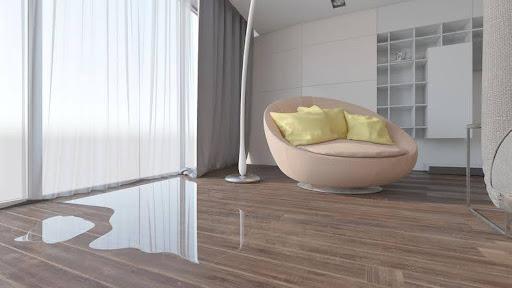How Long Does It Take Water to Damage Wood Floors
May 15, 2024

Water damage is a nightmare for any homeowner, especially when it comes to wood floors. Whether it's a burst pipe, a leaking appliance, or a natural disaster, the consequences of water damage can be devastating, and it’s important to address it quickly.
Let’s take a look at how long it takes water to damage wood floors, and what you should do about it if it happens in your home.
Understanding the Vulnerability of Wood Floors
Wood is vulnerable to water damage because of its porous nature and composition, which allows water to quickly seep into its fibers. The moment water touches wood floors, the absorption process begins.
Wood also retains moisture within its fibers, making it challenging to dry thoroughly. Inadequate drying can lead to residual moisture, which can create an ongoing problem.
Short-Term vs. Long-Term Exposure
In the initial hours following water exposure, the wood may start to swell and warp. You might notice cupping, where the edges of the planks curl upward, or crowning, where the center of the planks becomes elevated.
As time passes, the moisture trapped within the wood creates an ideal environment for mold and mildew growth. Within 24 to 48 hours, mold spores can begin to colonize, posing health risks to residents and further compromising the structural integrity of the flooring. The presence of mold not only exacerbates the damage, but also leads to more serious and costly remediation efforts.
If you don’t address the water situation for an extended period, things get a lot more serious. Prolonged exposure to water can lead to irreversible damage, such as severe warping, delamination, and even rotting of the wood. The moisture exposure can also weaken the adhesive bonds between the wood and the subfloor, causing the floorboards to become loose or detached.
Even once you remediate the visible signs of water damage, you could still be dealing with long-term effects. Wood that has undergone saturation and subsequent drying processes may experience lingering issues such as cracking, splitting, or discoloration. In addition, the structural integrity of the flooring may be compromised, meaning you’ll need repairs or replacement down the line.
Identifying the Signs of Water Damage
Recognizing the signs of water damage in wood floors is a must for early detection and prompt mitigation. In addition to the swelling or cupping mentioned above, here are some signs to watch for:
- Discoloration: Water-stained areas on the surface of the wood, which may appear as dark spots or patches.
- Sponginess or softness: Water-damaged wood flooring may feel soft or spongy to the touch, indicating saturation and deterioration of the wood fibers.
- Musty odor: A musty odor often indicates mold and mildew.
- Visible mold or mildew: In advanced cases of water damage, mold and mildew may become visible on the surface of the wood flooring. Mold growth can appear as black, green, or gray patches, and may spread rapidly if left unchecked.
DRYmedic: Your Partner in Water Damage Restoration
When water damage occurs in your home, it’s important to act fast. DRYmedic offers comprehensive restoration services for dealing with emergency water damage and the restoration process afterward. If you’re dealing with water damage, contact the DRYmedic team at (415) 851-0466.